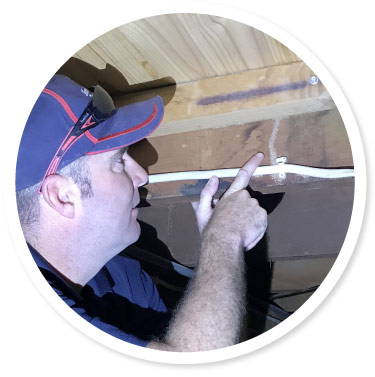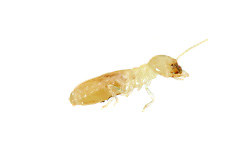Termites are destructive pests that can cause significant damage to properties worldwide, in particular in Australia. When it comes to managing a termite problem, two primary approaches come into play: termite control and termite treatment.
Although they are often used interchangeably, these terms represent different strategies in termite management, each with its unique objectives, processes, and advantages.
If you think you may have termites, or you just want to be safe, contact the experts at Jim’s Pest Control Darwin on 131 546 today.
Termite Control vs Termite Treatment – What’s The Difference?
Termite control refers to a proactive, preventative approach to safeguard structures from potential termite infestations. It is a holistic process that involves various steps, including risk assessment, mitigation, and continuous monitoring.
On the other hand, termite treatment is a reactive measure undertaken to address an existing termite problem. This usually involves the direct application of pesticides or other termite-killing substances to eliminate an active infestation. Let’s delve deeper into each of these aspects.
Why use Jim’s for your Termite problems?
Given the damage termites cause, it’s just not worth messing around with sub-standard treatments.
At Jim’s Termite and Pest Control Darwin, we pride ourselves on being leaders in termite treatment, control, and prevention systems.
We offer a range of different treatment and control options to suit your situation.

Termite Control
Termite control is primarily preventative in nature and involves various strategies designed to deter termites from infesting a structure.
These strategies often start with a thorough inspection to identify any potential risk factors that might attract termites, such as woodpiles, damp soil, or structural vulnerabilities. The objective is to create an environment that is less appealing or accessible to termites.
After assessing the risks, appropriate control measures are put in place. This can include physical barriers, such as metal or concrete structures that termites cannot penetrate, and chemical barriers, such as soil treatment with termite-resistant chemicals.
There are also baiting systems, where strategically placed baits (containing slow-acting insecticides) attract foraging termites that then carry the poison back to their colony.
Monitoring is another key aspect of termite control. Regular inspections are conducted to identify signs of termite activity and evaluate the effectiveness of the control measures. If termite activity is found, this signals that the control measures are not sufficient, and further steps need to be taken.
The primary advantage of termite control is its preventative nature. By taking steps to deter termites before they become a problem, property owners can often save money and stress in the long run.
Termite control can also be more environmentally friendly than termite treatment, as it relies less on pesticides and more on deterring termites from settling in the first place.

Termite Treatment
Termite treatment is the course of action taken when a termite infestation has already occurred. Its primary goal is to eliminate the existing termite population and prevent further damage.
There are different methods of termite treatment, and the most appropriate one will depend on the extent of the infestation and the species of termite.
Liquid pesticides, known as termiticides, are often used in termite treatment. These can be applied to the soil surrounding a property or directly onto termite-infested areas. The chemicals can kill termites on contact and create a treated zone that repels or kills termites that cross it.
Another common method is baiting, where poisoned bait is left for termites to find and bring back to their colony. The bait is typically slow-acting, allowing the poisoned termites time to spread the poison throughout the colony before they die.
Fumigation is a more drastic form of termite treatment, usually reserved for severe infestations. The property is sealed off, and a lethal gas is pumped in to kill all the termites.
Termite treatment is usually more costly and disruptive than termite control, as it often requires the use of heavy chemicals and can sometimes require residents to vacate the premises. However, it is a necessary step when an infestation has already occurred.
Successful termite treatment not only eliminates the current infestation but should also include measures to prevent future infestations.
In conclusion, termite control and termite treatment represent two sides of the same coin in managing termite problems. The former focuses on prevention, risk mitigation, and continuous monitoring, while the latter is geared towards the elimination of an existing infestation.
Both play crucial roles in maintaining the structural integrity of a property, and understanding their differences is key to formulating an effective termite management plan.
Termite FAQs
How long does it take for termites to destroy a house? Termites can work at varying speeds depending on the species of termite and the size of the colony. If left undetected some species may cause significant damage within months. This is largely why it is recommended you have your home inspected annually by a competent termite expert. Is termite damage covered by insurance in Australia? Unfortunately home insurance does not cover damage done by termites. Insurers will deem termites as a preventable issue, as they do any possible insect damage. Most insurance polices will only offer cover for events that are regarded as sudden and unforeseeable. However reputable pest companies will offer timber warranties and free service periods on any complete termite barrier installed around your home. Why is termite treatment so expensive? There are many aspects of a termite treatment that can add to the cost. Treatments may first require visual inspections that can take multiple hours to conduct thoroughly. Expensive specialised equipment is often required to locate and treat termites. Often hundreds even thousands of litres of chemical are also required to ensure a complete protective barrier is installed around your home. What are signs of termite damage? Visible signs of termite damage can include flaky looking timber, bulges in walls or ceilings, damp areas resembling water damage, and dirt lines or ‘tracks’ on walls. It’s important to remember some signs of termite damage can not be seen without a destructive inspection. This can mean removing wall cladding and other building materials. Often the use of specialised termite detection equipment is also required to locate damage. What attracts termites to a house? Timber structures inside your home are often regarded as the main attractant for termites. However there are many other conditions just as conducive. Moisture created by inadequate roof flashing or leaking taps in bathrooms and kitchens are also a major factor. You also need to think of factors outside of your home. Items stacked against exterior walls, or trees touching the structure can attract termites and provide a highway straight into your home. How often should you spray for termites? Unfortunately there is no simple answer when it comes to the regularity of termite sprays. As a minimum it is recommended that you have your home and property inspected annually by a qualified timber pest technician. Low risk homes with a complete termite barrier installed may not need any additional sprays for years. However homes and yards prone to termite activity may require yard treatments every few months. Is it worth getting termite treatment? Termites cause millions of dollars damage every year to Australian homes. If left untreated, the damage done to a home can leave them uninhabitable and beyond repair. Termite barriers that can be easily installed can protect your home from termite infestations for years. It’s important to remember that termite damage is not covered under standard home insurance.
